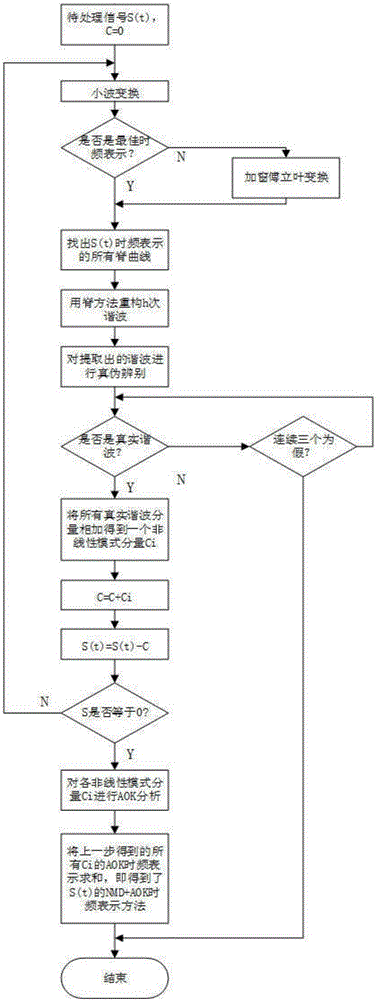Time-frequency analysis method based on nonlinear mode decomposition and adaptive optimal kernel
A technology of mode decomposition and time-frequency analysis, applied in the field of time-frequency analysis of non-stationary signals, can solve the problems of noise sensitivity and insufficiency
- Summary
- Abstract
- Description
- Claims
- Application Information
AI Technical Summary
Problems solved by technology
Method used
Image
Examples
Embodiment Construction
[0085] In the following, a multi-component non-stationary simulation signal is taken as an example to describe in detail the implementation and advantages of the present invention.
[0086] Suppose s(t) is a multi-component signal containing Gaussian white noise:
[0087] s(t)=s d (t)+n(t)
[0088] s d (t)=cos(20πt)+sin(200πt)+sin(400πt)+sin(100π(t-0.5) 2 )
[0089] In the formula, n(t) represents Gaussian white noise; s d (t) is an ideal multi-component signal. Set the sampling frequency to 1kHz, the sampling time to 1s, and the data length to 1000. Set the window length 2T=128, and the kernel function volume limit is β=5.
[0090] The process of the present invention is as figure 1 As shown, including the following steps:
[0091] Step A: Prepare the signal s(t) to be processed, the sampling frequency of which is f s , The data length is N;
[0092] Step B: Perform NMD analysis on the signal s(t);
[0093] Step B-1: Calculate the wavelet transform (Wavelet Transform, WT) W of the sign...
PUM
 Login to View More
Login to View More Abstract
Description
Claims
Application Information
 Login to View More
Login to View More - R&D
- Intellectual Property
- Life Sciences
- Materials
- Tech Scout
- Unparalleled Data Quality
- Higher Quality Content
- 60% Fewer Hallucinations
Browse by: Latest US Patents, China's latest patents, Technical Efficacy Thesaurus, Application Domain, Technology Topic, Popular Technical Reports.
© 2025 PatSnap. All rights reserved.Legal|Privacy policy|Modern Slavery Act Transparency Statement|Sitemap|About US| Contact US: help@patsnap.com



